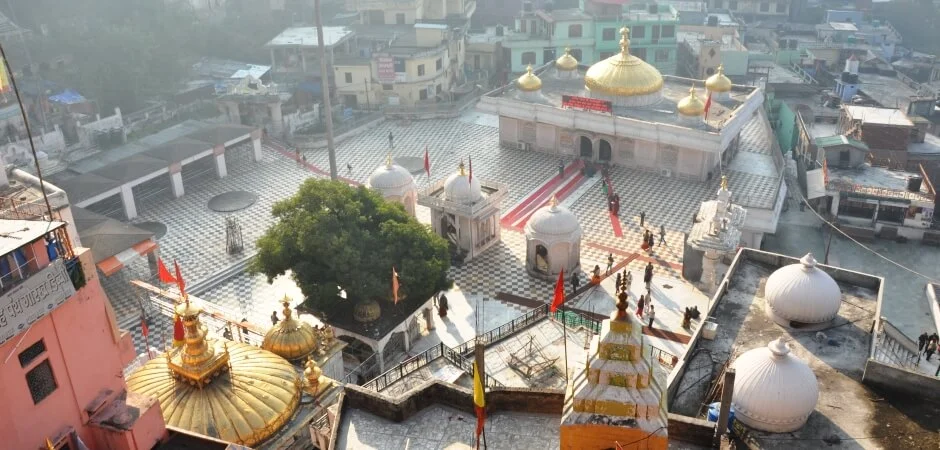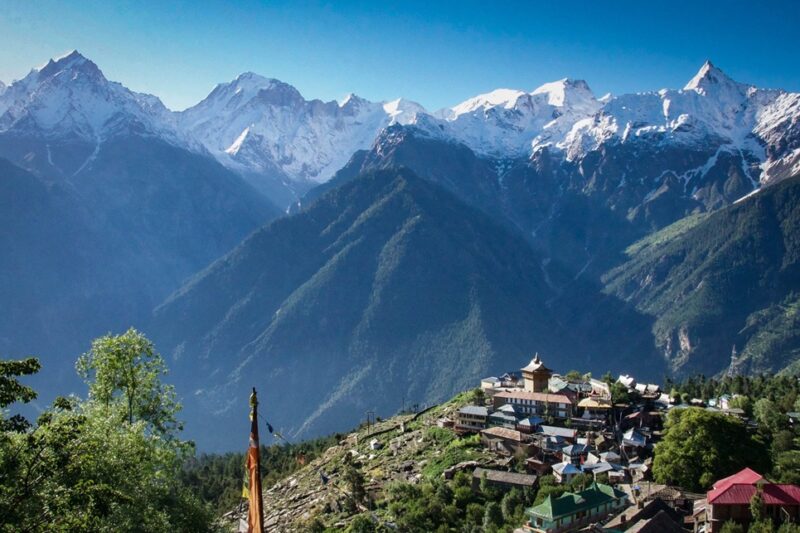Located in the Kangra district of Himachal Pradesh, the Jwala Ji Temple is one of the most revered Shakti Peethas in India. It is famed for its eternal flame — natural jets of fire that emerge from the temple’s rock surface without any known source of fuel — a phenomenon that has captivated devotees and scientists alike for centuries.
The Legend of Jwala Ji
The temple is associated with the mythological tale of Sati, the consort of Lord Shiva. According to Hindu scriptures, when Sati immolated herself in protest against her father Daksha’s insult to her husband, Lord Shiva, in grief, carried her charred body and performed the Tandava, the cosmic dance of destruction. To save the universe from devastation, Lord Vishnu used his Sudarshan Chakra to cut Sati’s body into 51 parts, which fell at different places across the Indian subcontinent. These places became known as the 51 Shakti Peethas.
It is believed that Sati’s tongue fell at the site where the Jwala Ji Temple stands today. Hence, the deity here is worshipped in the form of a flame, symbolizing Sati’s fiery power.
The Eternal Flames
The most astonishing feature of the Jwala Ji Temple is the nine eternal flames that emerge from different points in a rock cleft within the sanctum. These flames are considered manifestations of different goddesses — Mahakali, Annapurna, Chandi, Hinglaj, Vindhyavasini, Mahalakshmi, Saraswati, Ambika, and Anjana. There is no visible source of fuel for these flames, and despite modern investigations, their origin remains a mystery, further adding to the temple’s spiritual significance.
Historical Significance
The temple’s antiquity is referenced in ancient texts and was even acknowledged by Mughal emperor Akbar, who once tried to douse the flames unsuccessfully and later offered a golden canopy to the temple. However, according to folklore, the canopy turned into an unknown metal, possibly symbolizing the goddess’s rejection of the emperor’s offering.
In the 19th century, Maharaja Ranjit Singh, the founder of the Sikh Empire, donated gold to adorn the temple’s dome, contributing to the temple’s prominence as a sacred site of pilgrimage.
Architectural Style
Unlike typical Hindu temples that house idols, the Jwala Ji Temple does not contain any image or statue of the goddess. The sanctum instead houses the holy flames emerging from crevices in the rock. The temple architecture features a silver-plated doorway, a dome gilded in gold, and intricate carvings, creating a visually divine atmosphere that complements the spiritual essence of the site.
Festivals and Celebrations
The temple hosts two major fairs during the Navratras (in Chaitra and Ashwin months), attracting thousands of pilgrims from across the country. Devotees throng the temple to witness the aarti performed at the flames and to seek blessings from the goddess.
The Maha Aarti, performed five times a day, is a sacred ritual where ghee and offerings are made to the flames. The atmosphere during the aarti is filled with chants, bells, and deep reverence, making it a spiritual experience unlike any other.
Accessibility and Visiting Information
Jwala Ji Temple is located around 34 km from Kangra, 56 km from Dharamshala, and 135 km from Pathankot, which is the nearest major railway station. The closest airport is Gaggal Airport near Kangra. The temple is well connected by road and easily accessible for pilgrims.
The surrounding area also offers scenic views and a peaceful environment, making the journey a blend of devotion and natural beauty.





